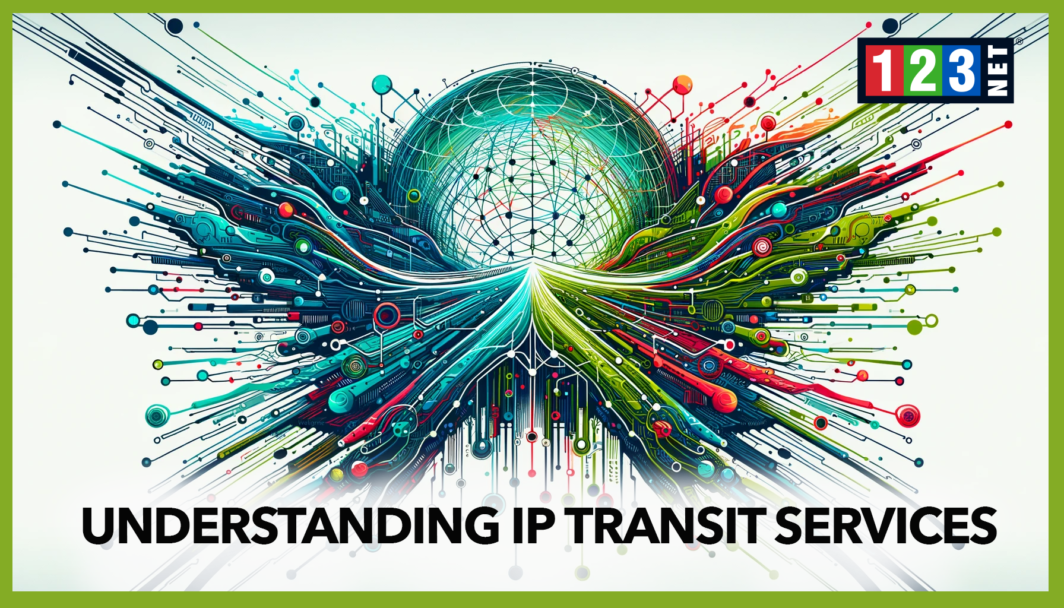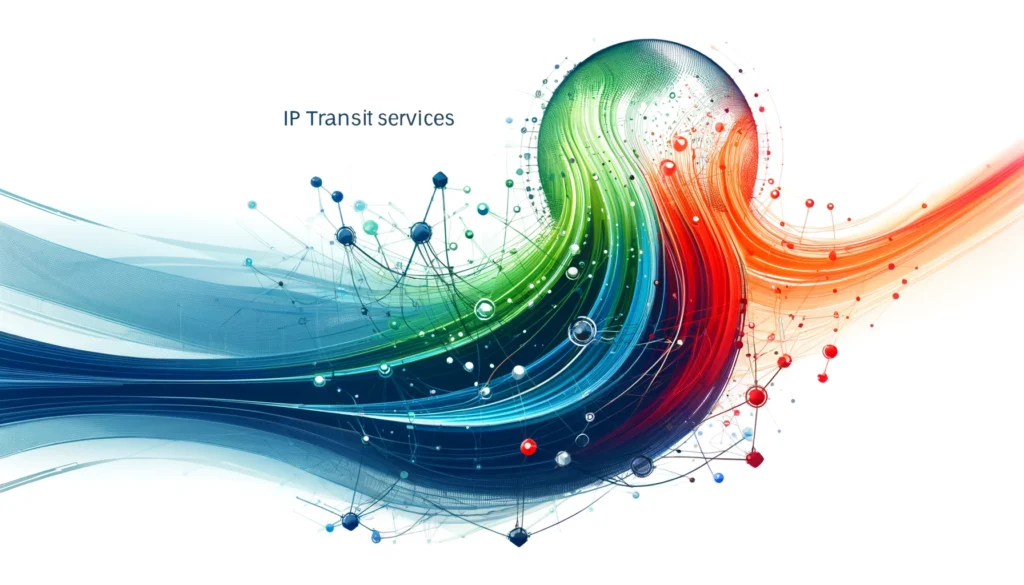
Introduction
IP Transit is a critical service in global networking that allows internet data to traverse multiple networks, ensuring efficient delivery to end users. This foundational service is essential for the connectivity and performance of the Internet, involving the purchase and sale of network traffic among Internet Service Providers (ISPs). Primarily facilitated through a process called peering, IP Transit connects diverse networks, supporting a seamless global internet experience. This introduction outlines the pivotal role of IP Transit in maintaining the vast and interconnected nature of the Internet.
What is IP Transit Services?
IP Transit services are integral to the movement of internet traffic between various networks, spanning from individual customer networks to the broader global internet. This essential service hinges on the collaboration of Internet Service Providers (ISPs), which utilize a strategic combination of IP addresses and Autonomous Systems (AS) to facilitate traffic routing. IP addresses serve as unique identifiers for devices connected to the internet, enabling precise targeting and data delivery across the vast network landscape. In contrast, Autonomous Systems comprise substantial blocks of IP addresses managed by distinct entities or organizations. These systems are uniquely identified by Autonomous System Numbers (ASNs), which play a pivotal role in managing and directing internet traffic. ASNs help in creating a structured environment for data exchange, ensuring that the routing process is both efficient and reliable. A deep understanding of these critical components—IP addresses, Autonomous Systems, and ASNs—is fundamental in comprehending how IP Transit operates. This knowledge is not only crucial for those directly involved in network management but also enhances the overall efficiency and security of internet data transmission globally.
Types of IP Addressing: PI vs. PA
IP addressing is a fundamental aspect of network management and internet connectivity, categorized into two primary types: Provider Independent (PI) and Provider Aggregatable (PA). Understanding these classifications is crucial for any organization managing online operations.
Provider Independent (PI) Addresses
Provider Independent addresses are assigned directly to end-user organizations by regional internet registries. One of the main advantages of PI addresses is their portability across different Internet Service Providers (ISPs). This flexibility allows organizations to switch ISPs without changing their IP addresses, thereby maintaining consistent internet presence and accessibility. Moreover, PI addresses provide organizations with greater control over their routing policies and network management. They are particularly beneficial for businesses requiring stable, long-term internet resources, as they do not depend on any single ISP’s infrastructure. The autonomy associated with PI addressing can significantly enhance an organization’s network resilience and reduce dependency on provider-specific services.
Provider Aggregatable (PA) Addresses
In contrast to PI addresses, Provider Aggregatable addresses are allocated to customers by ISPs themselves. These addresses must be used within the assigning ISP’s network, making them less flexible than PI addresses. The use of PA addresses ties an organization’s network identity closely to their ISP, which can complicate transitions between providers. Switching ISPs often requires a complete reassignment of IP addresses, leading to potential downtimes and the need for extensive updates in network configuration. PA addresses are typically more common and may be more cost-effective for smaller organizations or those without significant needs for provider independence.
Impact on IP Transit Services Strategies
The choice between PI and PA addressing significantly influences IP Transit strategies. Organizations using PI addresses can negotiate transit agreements with multiple ISPs, potentially optimizing cost and performance. Conversely, those using PA addresses are somewhat restricted to their ISP’s network and services, which can affect their transit options and overall network performance. This dependency makes understanding and choosing the right type of IP addressing a critical decision in network planning and internet strategy.
Autonomous Systems and AS Numbers
Autonomous Systems (AS) are central to the structure of the internet. It is playing a crucial role in IP Transit by streamlining and organizing how data is routed across different networks. Each AS represents a collection of IP routes managed by a single entity. Such as an Internet Service Provider (ISP), a large organization, or a university, which has a distinct routing policy.
Unique Identification with AS Numbers
Each Autonomous System is assigned a unique Autonomous System Number (ASN) which is vital for the operation of the Border Gateway Protocol (BGP), the primary mechanism by which internet routing decisions are made. BGP enables different Autonomous Systems to communicate and exchange routing information, ensuring that data packets find the most efficient paths to their destinations.
BGP: The Backbone of Internet Routing
The Border Gateway Protocol is the global standard for routing traffic between Autonomous Systems. It is one of the most crucial components in the architecture of the internet. They influencing how routing decisions are made across vast networks. BGP uses the ASN of each system to engage in complex decision-making processes that determine the best routes for data transfer.
ASNs and Routing Policies
ASNs are not just identifiers; they also play a pivotal role in defining the routing policies and paths that dictate how traffic are exchange between networks. These policies can include preferences, restrictions, and rules that affect how routes are advertise and to accept by other AS. For instance, an AS might prioritize or de-prioritize certain routes based on the cost, speed, or reliability of the path. It is thereby optimizing network performance and cost-efficiency.
Strategic Impact on Internet Routing
The strategic use of ASNs in conjunction with BGP allows networks to manage their traffic more effectively. It is adapting to real-time internet conditions and user demands. This adaptability is crucial for maintaining fast and reliable access to online resources. It is ensuring that the underlying infrastructure of the internet can support growing amounts of data. Also increasingly complex digital interactions. Understanding and managing this aspect of IP Transit is essential for network administrators and ISPs aiming to optimize their service offerings and ensure robust connectivity for their users.
Understanding BGP and AS PATH
The Border Gateway Protocol (BGP) serves as the principal protocol for routing data across the internet. It plays a critical role in how information transmit through the vast network of connections that make up the global internet infrastructure.
The Role of BGP in Internet Routing
BGP is essential for managing the exchange of routing information between different Autonomous Systems (AS). By enabling diverse networks to communicate their routing information, BGP maintains one of the largest and most complex routing tables in the world. Its robustness and scalability make it indispensable for modern internet operations.
AS PATHs: The Decision Makers in BGP
A key feature of BGP is its use of AS PATHs. These paths are lists of AS numbers that data packets traverse to reach their destination. Each AS adds its ASN to the path as the packet passes through it. This is creating a route history that BGP routers use to make routing decisions.
Efficiency Through AS PATHs
AS PATHs are crucial for determining the most efficient and reliable routes through the internet’s complex network of Autonomous Systems. By analyzing the ASNs listed in AS PATHs, BGP can avoid loops and select the shortest or most optimal path for data to travel. This efficiency is vital for enhancing the performance of IP Transit. As it directly affects the speed and reliability with which data reaches its end destination.
The Impact of BGP on IP Transit Performance
The strategic use of BGP and AS PATHs significantly influences IP Transit by optimizing routing decisions. These are essential for the smooth operation of internet services. As BGP manages the paths that data takes across different networks, it directly impacts the efficiency and performance of the internet. This makes BGP a cornerstone of network management and optimization in the complex ecosystem of global internet routing.
IP Transit Services Tiers: Tier 1, 2, and 3 Providers
IP Transit providers categorize into three tiers based on their network reach and the nature of their interconnectivity with other networks. This tiered structure plays a pivotal role in shaping the global internet hierarchy.
Tier 1 Providers: The Top of the Internet Hierarchy
Tier 1 providers are at the apex of the internet hierarchy. They have the unique capability to access every other network on the internet without needing to purchase IP Transit services. This is because they are part of a select group of networks that maintain peering agreements with each other. This is allowing for the free exchange of traffic. These networks serve as the backbone of the internet, facilitating global connectivity and unrestricted data flow across borders.
Tier 2 and Tier 3 Providers: Dependent on Higher Tiers
Tier 2 providers have significant international reach. They also still rely on Tier 1 providers for access to some parts of the internet. They typically purchase IP Transit from Tier 1 networks to ensure comprehensive connectivity. Tier 3 providers, on the other hand, are more regional or local in their scope. As well as heavily depend on both Tier 1 and Tier 2 providers for broader internet access. These providers often focus on serving specific geographic areas, providing last-mile services to end users.
Understanding the Impact on Internet Routing
Recognizing the distinctions among Tier 1, Tier 2, and Tier 3 providers is crucial for understanding internet routing dynamics. The tier system influences how data is route through the internet and the costs and performance of internet access. For instance, higher-tier providers can negotiate more favorable peering agreements due to their broader network reach and capacity. In contrast, lower-tier providers must strategically manage their IP Transit purchases to balance cost and performance. This is directly impacting the end-user experience. This hierarchical structure ensures that the internet remains scalable and accessible. While also dictating the flow and control of internet traffic globally.

FAQs on IP Transit Services
- What is the difference between IP Transit and peering? A: While IP Transit involves a financial transaction and is typically used by smaller networks to access the internet, peering is an agreement to exchange traffic without a financial component, generally used by networks of similar size.
- What are the security risks associated with IP Transit? A:The primary security risks include DDoS attacks, route hijacking, and other forms of cyber threats that can disrupt service and expose data.
- How do Tier 1 ISPs interact with lower-tier ISPs? A: Tier 1 ISPs provide access to the global internet to lower-tier ISPs through IP Transit agreements, enabling these smaller networks to offer wider internet access to their users.




